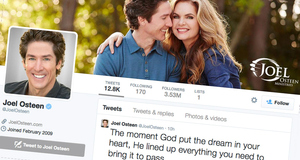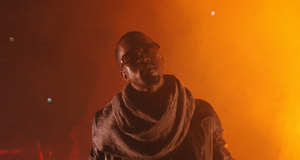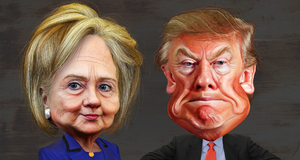From Elon Journal of Undergraduate Research in Communications VOL. 4 NO. 1Social Media and Politics: Twitter Use in the Second Congressional District of VirginiaV. ConclusionThe primary goal of this study was to define the tactical strategies of incumbent Scott Rigell and competitor Paul Hirschbiel’s social media use of Twitter in the 2012 Congressional election. Past research indicated that congressmen on Twitter in 2010 primarily used it to disseminate information, particularly links to news articles and blog posts, as well as updating the public on current activity (Golbeck, et al., 2010). Until now, research in this area has been broad—focusing on all Congressmen using Twitter—and has not been confined to a specific congressional district during a political race. This study sought to narrow it to two individuals running in the 2012 general election in the 2nd Congressional District of Virginia. As the election is in November 2012, only one month away from the date of gathered research, this study is timely and a strong indicator of how these candidates are using Twitter to inform and engage their publics. To conduct this study, the researcher used content analysis to collect, categorize, and code the 200 most recent Twitter posts, or tweets, shared by each candidate starting October 20, 2012. The resulting findings provided insight into how Scott Rigell and Paul Hirschbiel distinctively cultivated Twitter to attract voters. At its most basic level, the findings of this study are consistent with past research and findings about congressional posts. The two candidates, Scott Rigell and Paul Hirschbiel, used Twitter to (1) post information and (2) tweet about their current activity, making up over 60% of each candidate’s posts. Gerardine DeSanctis’ and Marshall Scott Poole’s (1994) Adaptive Structuration Theory (AST) mentioned in the literature review supports this idea that social media sites are a means of transferring information from one societal group to another and that this informational exchange is two-sided and circulates from structure to system and system to structure. The AST also makes the assumption that as this social networking device advances and there is an increase in “interpenetration of structure,” it can impact an entire social organization and inspire change (DeSanctis and Poole, 1994). In the case of this study, the social networking device is Twitter, and Rigell and Hirschbiel used it as a means of attracting voters in a social structure. In the political realm, Twitter creates opportunities for politicians to motivate and activate their followers and differentiate themselves from their competitor. Although the research showed that both candidates use Twitter to post information and update followers about their current activity, there are differences in the direct communication and personal messages posted by the candidates. Motivate, Activate, and Differentiate Motivate. The top-most employed tactical strategy used by Hirschbiel and Rigell in their Twitter posts is informational tweets. The vast majority of these informational tweets have links to other articles or resources relevant to their campaigns. By sharing information, the candidates provide their Twitter followers with facts, figures, and incentives to side with their campaign. This kind of political information effort arouses citizens and gets the candidates one step closer to their desired goal: more votes. Since Twitter is being used to aggregate and disseminate information to the broad population of the candidates’ Twitter followers, leveraging its power can reconnect citizens to the voting process and inspire political excitement. Activate. Following the use of information posts are activity posts—both official business and location updates—used when the candidate informs followers about congressional meetings, personal activities in the home district, visits with lobbyists, or non-Congressional organizations, or trips. By tweeting about current activity to followers, the candidates excite political participation and activate volunteers. For example, Hirschbiel tweeted: “Had a blast this weekend at the new OFA Office in Norfolk! The crowd was as fired up as they come and ready to work!” One might notice in Hirschbiel’s post that he mentions volunteers are already at the event “ready to work.” A tweet like this informs followers about the volunteer work that citizens are doing for Hirschbiel’s campaign, while instilling excitement about potential volunteer opportunities for his followers in the future. Twitter has the power to influence attitudes about politicians, set agendas, and even shape outcomes of campaigns (Gale Opposing Viewpoints, 2010). After opening up the door to this kind of social media interaction with the public, politicians are smart to use Twitter to their advantage. As previously mentioned, the Adaptive Structuration Theory asserts the idea that a social media device can influence an entire social structure and inspire change in behavior. Effective use of location and activity posts is an important means of inspiring citizens to take a more active role in their preferred candidate’s campaign. Differentiate. Content analysis reveals that Republican candidate Scott Rigell posted more direct communication tweets—internal and external—than Democratic candidate Paul Hirschbiel. These kinds of tweets were directed at a specific person with the @id convention and intentionally created a connection between Rigell and his followers. With Twitter’s increasing popularity, organizations and individuals are striving to separate themselves from the many social media users around them. Using direct communication likely reflects the way in which Congressman Rigell differentiates himself from his competitor. While Congressman Rigell uses direct communication to target his followers, candidate Paul Hirschbiel takes the more informal, non-business oriented approach, posting personal messages about his daily routine, personal sentiments, and family updates. Although Rigell tweeted personal messages on his Twitter feed, the percentage of Hirschbiel’s tweets coded as personal messages (28%) was more than double that of Rigell’s (11%). Candidate Hirschbiel engages with his Twitter followers by making himself more “human,” perhaps in hopes of seeming more accessible to the public. This pattern has significant implications for voters’ understanding of how Hirschbiel distinctively cultivates Twitter to attract them. Seen in the two political candidates’ Twitter campaigns, Twitter is an influential tool that if used correctly, can activate and motivate supporters. Twitter and other forms of social media provide a direct link from the candidates to the public, enabling them to differentiate themselves from their competitor, target a specific audience, increase their financial base of support, and attract new voters. By their very nature, “social” media outlets help a candidate reach the public through a more personal and intimate avenue than through the television and radio ads that have previously limited their direct contact with potential supporters. Candidates can post videos and tweets from campaign stops, put up testimonials, share their political views, state their parties’ platforms, and show their involvement in the community using the friendly, personal, and immediate avenue of social media. If harnessed effectively, Twitter, and social media as a whole, has the unprecedented potential to create grassroots support for a candidate never before seen in American politics. Future Study Although this study was concise and timely, a future study might analyze outgoing tweets from congressional candidates as well as the responses, retweets, and discussions these posts stimulate with their followers. Also, a future study of politics and Twitter could analyze the impact of different kinds of tweets and their potential relationship with the outcome of the political election. For this study the researcher excluded “reply” tweets on the candidate’s account. Originally, the researcher wanted to collect data more extensively; however, with limited time the research was capped. In addition, there was only one researcher conducting the content analysis of the tweets. If two or more researchers had been involved in coding, the results might have been more reliable. Both candidates had two Twitter accounts—one personal and one political—and, although similar tweets were posted on both the candidates’ accounts, the findings in this study were gathered only from the congressional Twitter accounts of these particular candidates, not from their personal accounts. AcknowledgementsThis author would like to extend thanks to Dr. Glenn Scott at Elon University for his guidance, inspiration and advice, without which the article could not be published. The author also appreciates numerous reviewers who have helped revise this article. ReferencesAgence France-Presse. (2012). Virginia Congressional Race Aims to Make Gains With Social Media. The Raw Story. Retrieved October 21, 2012, from http://www.rawstory.com/rs/2012/10/14/virginia-congressional-race-aims-to-make-gains-with-social-media/ Aharony, N. (2012). Twitter Use By Three Political Leaders: An Exploratory Analysis. Emerald Online Information Review, 36 (4), 587-603. Budak, A. (2010). Facebook, Twitter, and Barack Obama: New Media and the 2008 Presidential Elections. Retrieved September 16, 2012, from ProQuest Dissertations And Theses. (UMI No. 1474900) DeSanctis, G. and Poole, M. S. (1994). Capturing the Complexity in Advanced Technology Use: Adaptive Structuration Theory. Organization Science. 5, 121-147. Elo S., and Kyngas H. (2008). The Qualitative Content Analysis Process. Journal of Advanced Nursing. 62(1), 107–115. Gale Opposing Viewpoints. (2010). Politics and Media. Retrieved September 16, 2012, from http:// ic.galegroup.com/ic/ovic/ReferenceDetailsPage/ReferenceDetailsWindow?failOverType=&query=&wi ndowstate=normal&contentModules=&mode=view&displayGroupName=Reference&limiter=&currPag e=&disableHighlighting=true&source=&sortBy=&displayGroups=&action=e&catId=GALE%7CQGGGI S648242238&activityType=&scanId=&documentId=GALE%7CPC3010999139 Golbeck, J., Grimes, J.M. and Rogers, A. (2010). Twitter Use by US Congress. Journal of the American Society for Science and Technology. 61 (8), 612-21. Ingenito, D. (2010). Democracy in the 21st Century: Social Media and Politics—Global Village or Cyber-Balkans? . Retrieved September 16, 2012, from ProQuest Dissertations And Theses. (UMI No. 1476159) International: Sweet to Tweet; Politics and Twitter (2010). The Economist, 395 (8681), 61. Retrieved September 13, 2012, from http://search.proquest.com/docview/223973038?accountid=10730 Rosenberry, J., & Vicker, L. (2009). Research Methods. Applied Mass Communication Theory: A Guide for Media Practitioners (27-66). New York, NY: Pearson Education, Inc. Rosiak, L. (2012). Political-ad tsunami swamps southeast Virginia. The Washington Times. Retrieved September 16, 2012, from http://www.washingtontimes.com/news/2012/sep/11/political-ad-tsunamiswamps southeast-virginia/?page=2 Smith, A., and Brenner, J. (2012). Twitter Use 2012. PEW Research Center. Retrieved September 16, 2012, from http://www.pewinternet.org/~/media//Files/Reports/2012/PIP_Twitter_Use_2012.pdf Smith, A., and Rainie, L. (2012a). Social Networking Sites And Politics. PEW Research Center. Retrieved September 16, 2012, from http://www.pewinternet.org/~/media//Files/Reports/2012/PIP_SNS_and_ politics.pdf Turner, J. H. (1986). The Theory of Structuration. American Journal of Sociology. 4 (91), 969-977. Wadhwa, V. (2012). Social Media’s Role in Politics. The Washington Post. Retrieved September 16, 2012, from http://www.washingtonpost.com/national/on-innovations/social-medias-role-in-politics/2012/01/25/gIQAQvZgdQ_story.html Suggested Reading from Inquiries Journal
Inquiries Journal provides undergraduate and graduate students around the world a platform for the wide dissemination of academic work over a range of core disciplines. Representing the work of students from hundreds of institutions around the globe, Inquiries Journal's large database of academic articles is completely free. Learn more | Blog | Submit Latest in Business & Communications |



















